The Church of Santa Maria del Giglio is one of the most precious jewels of Venetian Baroque. A church, therefore a building that immediately suggests the consecration of the Catholic faith, a homage to the iconoclastic figure of the Madonna, a rejoicing of saints and angels But for Santa Maria del Giglio this is not so, because this Church is the exaltation of a family, the Barbaro, and its most famous exponent, the Venetian noble Antonio who had spent so much for the Serenissima Republic. In fact to see it well more than a place of worship could seem a secular place, where the miracles were preferred to the deeds of a man who with the divine had very little to share with.
Even John Ruskin, who knew Venice and its stones very well (writer and art critic, author of "Le pietre di Venezia" n.d.r.) had something to say about this choice, saying hard and strong words about it: "Manifestation of insolent atheism being these dedicated exclusively to the celebration of two families and not to God", the highest "personalistic celebration" of Venetian Baroque architecture.
How can we blame him? Dear Antonio Barbaro, if you really wanted the apotheosis of your greatness to become marble, why not build a palace instead of a church?
But let's take a closer look at this beautiful building.
The original building dates back to the 10th century. However, very little is left of that plant, gone up in smoke under the flames of two devastating fires. The church was then rebuilt twice, in 966 and 1105. This last project was financed by the Giubenico family, better known by the dialectal term Zobenigo. But the building and especially the facade that we can admire today from the homonymous Campo is the work of a baroque remake of 1680, wanted by Antonio Barbaro and commissioned to the architect Giuseppe Sardi who created an imposing and sumptuous theatrical backdrop, rich and opulent in details and details, decorations and sculptures, as the rules of the Baroque imposed.
Really of remarkable dimensions, the facade is presented in 3 distinct and sloping orders, which rise up to close with the central arched tympanum placed as the top element. The central doorway that invites to the entrance imposes itself as a chromatic break on the candid white of the stone that dominates inexorably. The first 2 orders are very similar to each other: pairs of twin columns, Ionic below and Corinthian above, frame his painting like a frame, arched niches decorated with beautiful bas-relief sculptures. In these there are statues placed on high pedestals. Saints? Apostles? No! The members of the Barbaro family. In the second order then, in the central band above the main door, is the royal and imposing statue of Anthony, triumphant and swaggering above his sarcophagus: as if to say that a terrain has challenged and triumphed over death. An example of egocentricity and exhibitionism without equal! This sculpture was attributed to the Flemish Just Le Court.
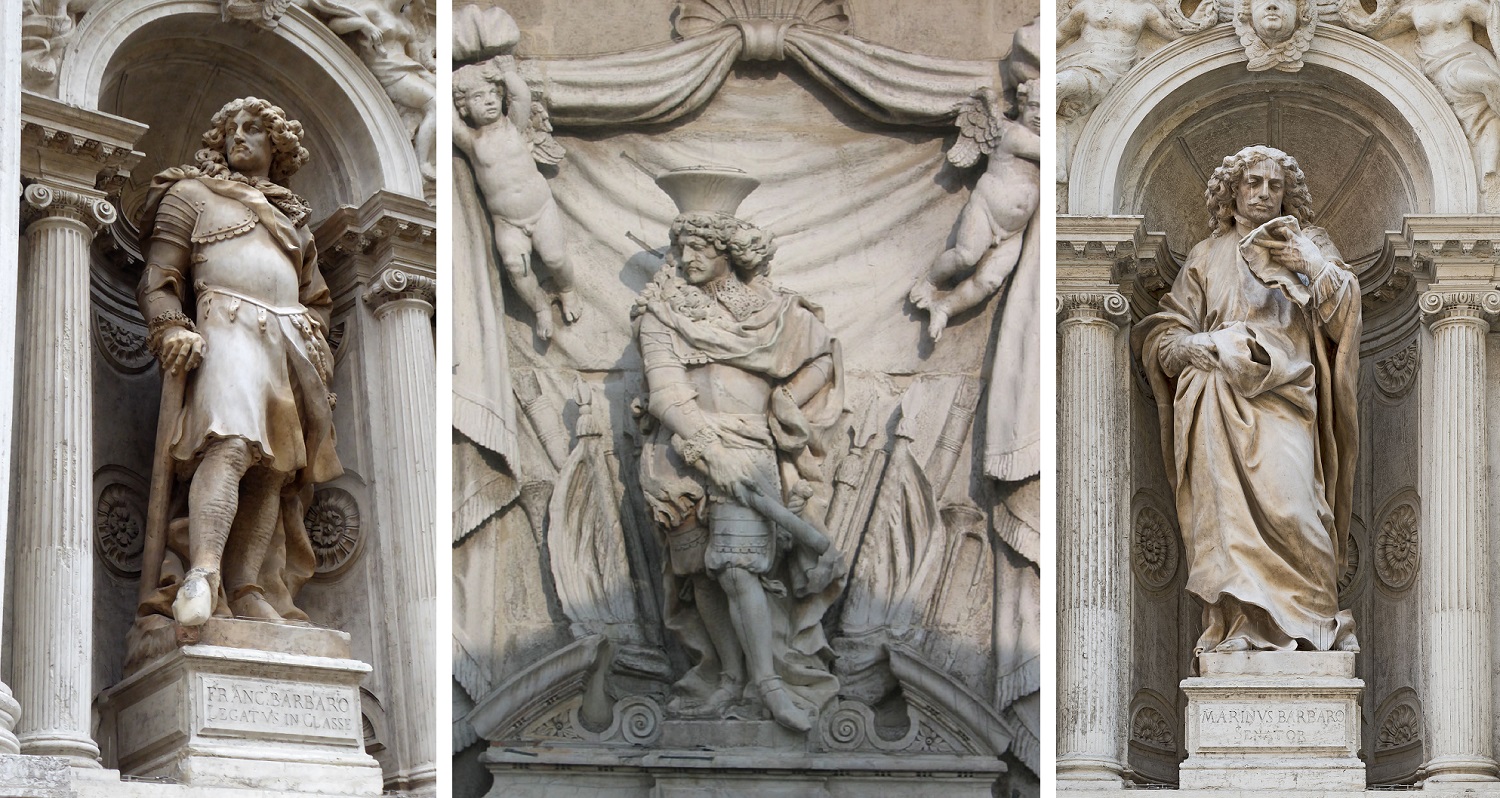
But the exaltation of Anthony did not stop here: the base of the Church, in fact, is enriched with bas-reliefs showing the 6 maps of the places where the nobleman performed some services for the Serenissima: Candia, Corfu, Padua, Rome, Split and Zadar. In the name of sobriety in short ...
The interior is certainly more measured: a single nave enriched with 14 paintings depicting the Way of the Cross, where on each side there are 3 chapels. All splendid but in particular the third on the right hosts the Visitation of Jacopo Palma il Giovane. Of great interest is certainly the apse area of the high altar embellished with 4 paintings by Tintoretto representing the 4 Evangelists.
But to arouse great wonder is certainly the Capella Molin, which is accessed through a corridor on the right side of the nave: it is here that the only painting by the Flemish Pieter Paul Rubens, the Madonna with Child and St. John.
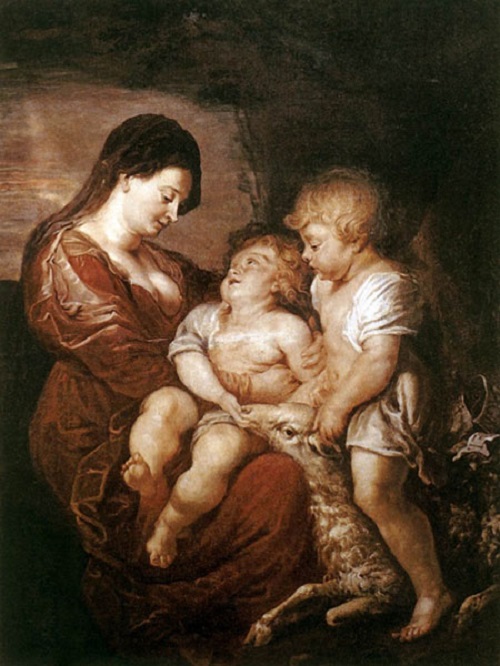
The building was originally "accessorized" also with a high bell tower, detached and isolated from the body of the Church. It was however demolished at the end of the eighteenth century because it was considered dangerous. But it has not completely disappeared, since its base is now used to house a small and delightful store. But to understand how this bell tower was, we can rely on the paintings of Canaletto and Francesco Guardi, who immortalized in their paintings this magnificent view of Venice.
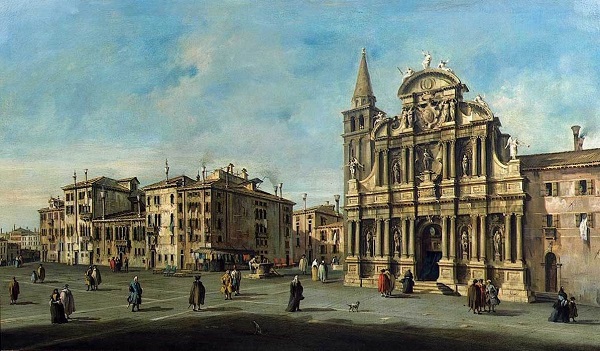
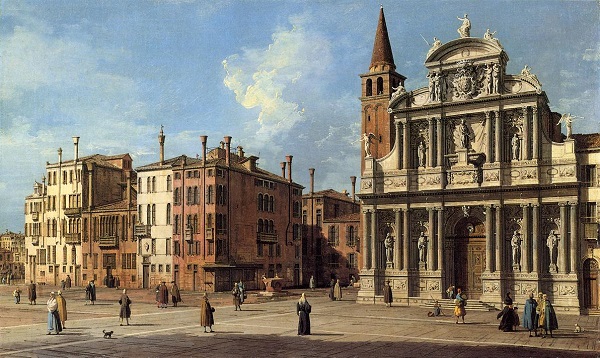
A room with a view
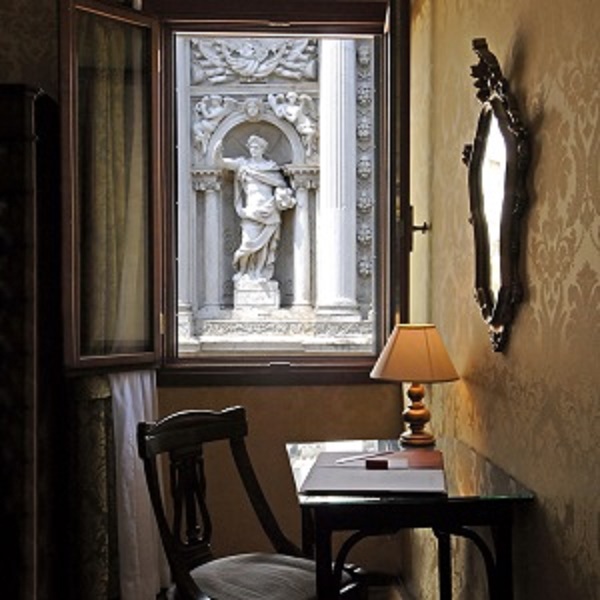
Very often in Venice the possibility to admire architectural compositions is prevented to us by the unique structure of the city, which does not give necessarily distant viewpoints for a wide range of its beauties: the calli that chase each other around the city and alternate with canals and canals, are narrow and force us to view from the bottom up, certainly not from a distance. But for the Church of Santa Maria del Giglio there is the possibility to admire the facade from very close, to catch all the details of elements and decorations, every sculpture, and for the whole height. How? Simply by staying at the delightful Hotel Bel Sito: located right in front of the Church, at a distance as wide as a calle, it offers rooms with breathtaking views from the decorations of the facade of the Giglio to the waters of the Grand Canal. These can be defined as rooms with a view!
Imagine opening the window of your living room to the second order of the Church's facade and looking straight into the marble eyes of Antonio Barbaro. Incredible no?
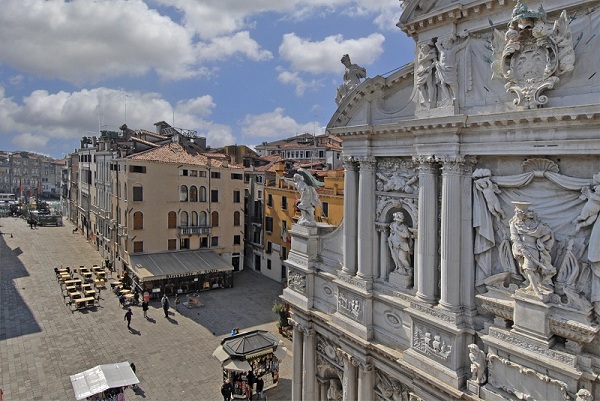
The hotel was founded in 1920 by Gino Serfini, welcoming visitors and travelers from all over the world in this long century of life. In the Sixties and Seventies, his café became a meeting place for intellectuals and artists who spent all night thinking about art and philosophy. Fixed presence was the painter and poet Virgilio Guidi, who gathered around him very young De Chirico and Vedova.
Over time the Hotel has preserved this passion and propensity for art, to which it has masterfully combined the art of receiving: professionalism and courtesy are distinctive qualities for this place and its staff, always polite, helpful and attentive to customer requests.
Furnished according to an exquisite eighteenth-century taste, elegant and precious, also enriched by original wooden trussed ceilings: a dive into the Serenissima of the golden age, the Doges and the fascinating ladies in crinoline. A delightful and quiet inner garden will allow you to isolate yourself for moments of relaxation and tranquility, between readings and intimate chats, while the coffee on the Campo will make you live the dynamism of everyday Venetian life.
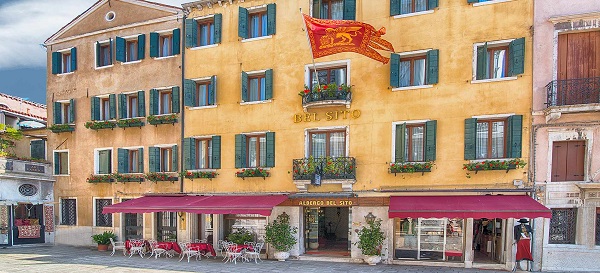
The hotel offers various services, all important to offer a comfortable and unforgettable stay. As well as the absolutely enviable location: just a few steps from the Grand Canal, the structure is easy to reach thanks to the Giglio vaporetto stop, and without having to cross any bridge with your luggage! And in the same point there is also a gondola station, for itineraries on the water's edge. A water gate on the Rio dell'Alboro will allow you to travel by private cab to and from the hotel as you wish and in comfort. In every corner of the hotel you can take advantage of the free Wi-Fi connection that will allow you to stay always connected with the world. The reception staff will fulfill your every wish: you can buy tickets for your trips, book gondola rides or private cabs, tickets for concerts and museums, or have advice and directions to discover places and attractions of the city, even the most hidden and unusual.
If you are accompanied by a 4-legged friend, know that at the Hotel Bel Sito is welcome: your room will be equipped with bowls and bed sanitized daily, for a comfortable stay even hairy guests.
For the guests of the Bel Sito, however, there is also an incredible additional plus, namely the possibility to attend the cultural lounge of the nearby Palazzo Marin.
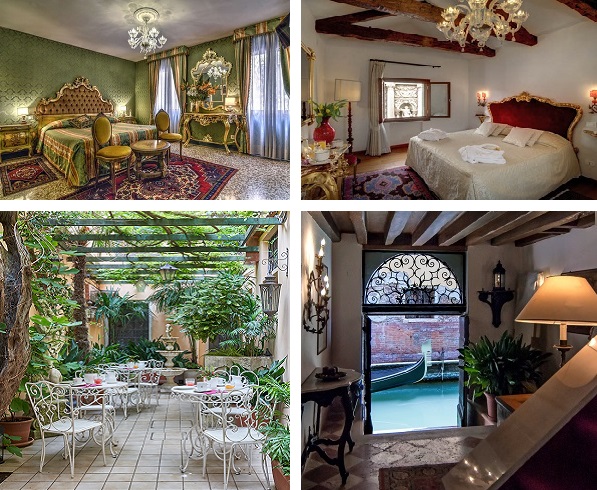
Palazzo Marin: a cultural salon in the heart of Venice
"It has the shape of a palace, but the heart of a house. It speaks through art, telling the story of a city and the people who have lived it. It offers the opportunity, allowing itself in turn: to be the symbol of a rediscovered, refined and unique elegance like that of a gem guarded with respect to the world".
The Palazzo Marin is a noble 16th century Venetian building. Its history is rather nebulous but it seems certain that it was built by the will of Carlo Antonio Marin. The structure came to life and vitality, however, thanks to Marin's wife, Countess Isabella Teotochi of Corfu: a fascinating and incredibly beautiful female figure, she was cultured and literate, and for this reason she always surrounded us with personalities of great cultural depth including Antonio Canova, Ugo Foscolo who loved her madly, and Vivian Denon who created the Louvre.
The Palace was then enriched two centuries later with wonderful frescoes inspired by the works of Tiepolo, such as The Flight of Helen of Troy, Theseus and Ariadne on the piano nobile, with 4 corner medallions depicting Apollo and the Muses.
On the same floor is the large hall overlooking the Rio della Fenice, from which you can enjoy a splendid view of the water gate of the famous theater: here the hall is embellished with the fresco La virtù incorona il merito.
In modern times the palace was then taken over by Gino Serfin, former owner of the Hotel Bel Sito, who, with great foresight, decided to expand the cultural salon that his hotel had, with the restoration and reopening to the public of this small jewel.
Today Palazzo Marin is a place for meetings and cultural exchanges, but also a welcoming and refined environment for public and private events, between art, music and the pleasure of sharing a pleasant moment. It offers the possibility of art and music meetings, classical and jazz concerts, events and presentations, but also celebrations of important moments of private life, to make them truly unforgettable.
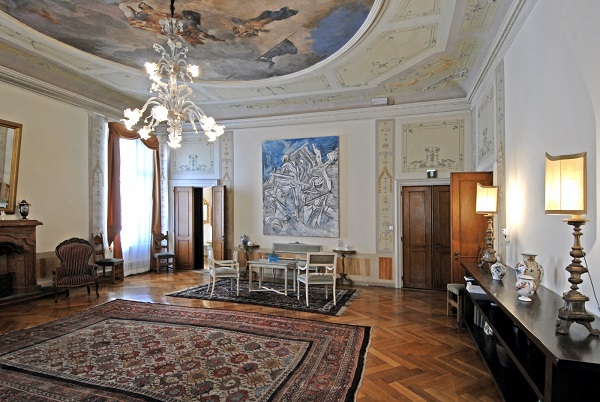
Hotel Bel Sito it's in Campiello Santa Maria Zobenigo, San Marco, 2517
Tel. +39.041.5223365 | Fax +39.041.5204083
E-mail info@hotelbelsitovenezia.it
Palazzo Marin it's in San Marco 2541
Tel +39 041 2410035
Email info@palazzomarin.it










Lascia un commento